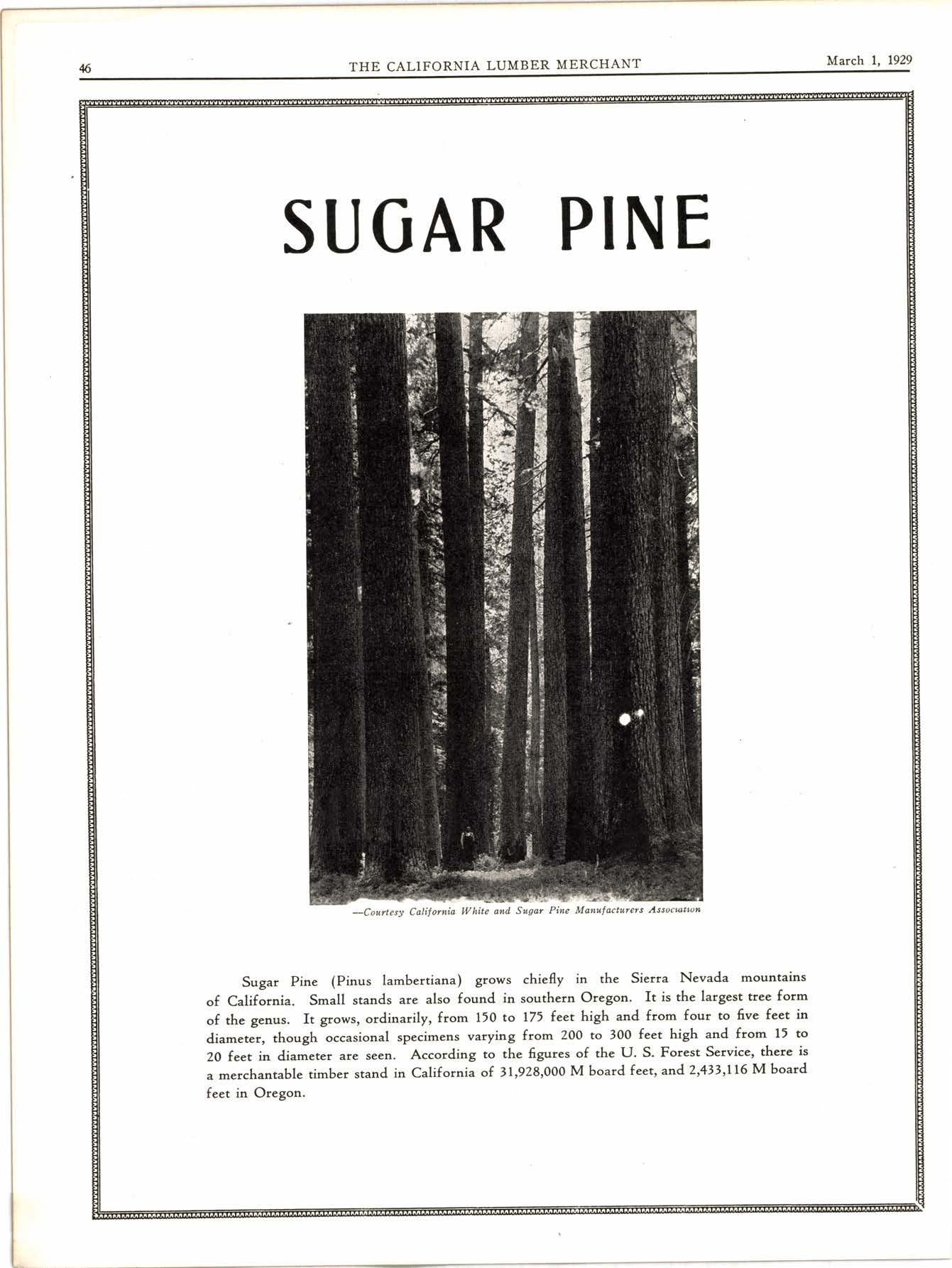
3 minute read
How Shall We StabilizeThe West Coast Lumber Industry
(Continued from Page 40) to keep lum,ber moving. Why should there not be a definite gradation of prices, or discounts, as between the selling rep_ resentatives of the mills, direct retail sales, commTssion sales, and wholesale transactions, so tfr"i quotations through all of these channels to ttre retailer or'customer would be on a comp-arable basis? And why should not the mills_ provide definite price protection, ihrough a fi*;A schedule of rates, to their own-salesmen?
Adherence to the terms of sale established by the mill for the various classes of its trade is one of the most essential features of a firm s_elling policy and one of the most important means of stabilizing the market.
Fifth: To make a firm price policy efiective in the domestic cargo markets and eivl the distributors of our products the ,protection which they seek, the West Coast lumber industry should unitedlv atiack the problem of the transit or consignment cargo. This is a big subject in itself, but I cannot forbear to touch upon it brielly in a program for the industry. The consolidation of Wesi Coasi luirber sales and distribution on the Atlantic seaboard throush asrries of strong organizations is one of the most promiiing developments toward a solution of this problem.'But asidi from what. may be accomplished in that direction, it is pl belief that a solution ii open through quoting all Atlantic Coast sales on a delivered, or C.I.F., basis an"d including therein a uniform tr-ansportation raie as established by the Conference steamship lines. Our rail business is based _upon fixed and stable freight rates; and in that respect at least the rail markets are protected fr,om demoralLation. Do we not have it within our power, notwithstanding the lack of control of cargo rates, to protect our seaSoard markets by carrying.the prices at thi mill through to the receiving port by selling at a delivered price which-uniform- ly includes the most stable charter rate we have?
Here again the contr,olling point is that of a firm selling policy adopted and maintained by the manufacturers. Onc"e su.9.h a. progr-qm wa_s definitely established by the cargo mills, it would surely react toward a stabilization of tf,e Atlantic Coast markets and strengthening the weakest point today in the lumber business of the West Coast
Stable Prices Should Regulate production
. 9".g_3 firm price policy becomes the prevailing practice in the West Coast industry, there would-be estabTished the most sound aqd the most direct basis for controllins pro- duction. The production program of each mill, bi tbtal volume and by items, should be directly related to its current sales and inventories so as to maintain the price oolicv which the mill has set up. Adjustments in production be- low normal operating capacity will still be necessary, but they will be focused directly irpon the vital point of-price. Each mill will have its own direct -."suring rod ls to when and how much it should restrict its outpu"t. And con- trol of production would be directly efiective in supporting an established market rather than in effort to bring'back i market that has passed under buyers' control. ThIs is, as l see tt, the only sure road to stability.
A program of this character wouldj of course, be greatly . strengthen"d !I the consolidation of selling organizitioni, particularly- selling organizations of a stablJcha-racter, con_ trolled by the participating mills. Devel,opment in this dir.ect191 as p_art of a firm policy is one of the-clearest needs of the West Coast lumbef industrv.
Let me add at this point a plea for the closest attention b.y the principals of our Wesf Coast lumber companies to their own selling policies and their sales trends from week to week. And let me also urge a closer correlation between the sales office and the prodiuction program in the mill. I am putting the situation before vou witf, the utmost frank_ ness; and with the privilege of irank speech I want to say that I believe one of t6e greatest 'weaknesses in otir industry.todll i: the tfndenJy to leave tt. ,"ffi"g lffice ' to wrestle with its problems ind dispose of its sticks as best it can without a-strong, definitely established "rra .orr- trolling policy to guide itl and furt-hermore that too fre- quently.the problems and difficulties of the selling office
3.t:, trot helped toward solution to the extent they mTght be rt the production program of the mill were closely adj-ustecl, g,a,y bLday, _to market conditions and opportunities. Th; West Coast lumber industry has made mirvelous progress in logging and manufacture. Its weak point is in sales and 311!andi;inq, It is on that point of #eakness th;; i-urg; the concentration of thought and effort to carry througtia program of real stabilitv.
It should be understbod that these suggestions, based upon a study of past-conditions, are directe-d-only to volun_ tary ac_tion by the individual lumber manufacturer in apply_ ing to his own business the lessons that may b. dr"*rriio'm the general handicaps and difficulties which have beset this I ndustrvTrade Extension and Merchandising
I want to add a word about trade extension. It has a definite and important place in this program. We can-do much to enlarge the maikets for West Co-ast woods and in_ crease their p.rices thr.ough better recognition of their qu;i_ lrres. 5ut trade extensions will never be truly effective until
(Continued on page 47)










